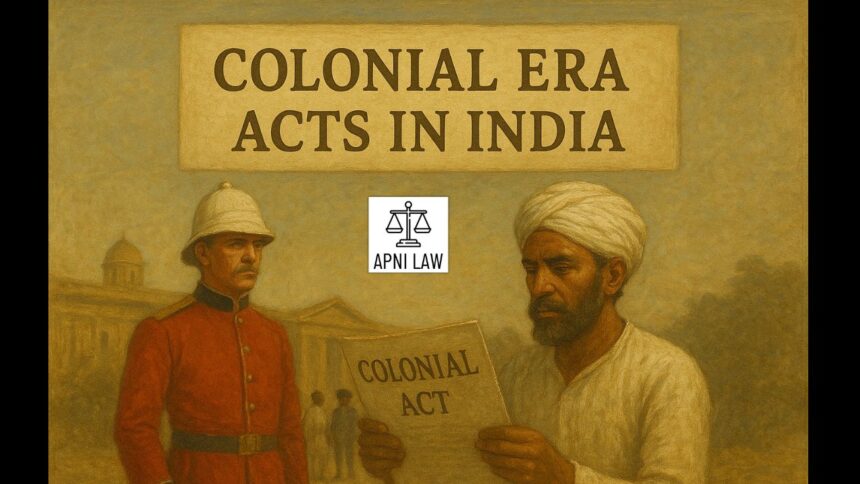Introduction
The Government of India Act 1919, also known as the Montagu-Chelmsford Reforms, marked a significant step in India’s constitutional journey. Announced after the Montagu Declaration of 1917, which promised “progressive realization of responsible government,” the Act sought to give Indians a larger role in governance. It introduced the system of dyarchy in provinces, dividing subjects into two categories and granting Indians limited control over some areas of administration. While these reforms created new political opportunities, they also revealed the limits of British willingness to share real power.
Background to the Reforms
By the end of World War I, nationalist pressure for self-government had grown stronger. The Indian National Congress, leaders like Bal Gangadhar Tilak and Annie Besant, and the Home Rule Movement all pushed for constitutional reforms. To respond, Secretary of State Edwin Montagu and Viceroy Lord Chelmsford prepared a report in 1918 recommending new measures. The British Parliament enacted the Government of India Act 1919, presenting it as a step toward responsible governance.
Main Features of the 1919 Act
The most notable feature of the Act was the introduction of dyarchy in provinces. Subjects of administration were split into “transferred” and “reserved” categories. Indian ministers, chosen from elected members of legislative councils, managed transferred subjects like education, health, agriculture, and local self-government. Governors and their executive councils, appointed by the British, controlled reserved subjects such as law and order, finance, and revenue.
The Act also expanded legislative councils at both central and provincial levels. For the first time, Indians formed the majority in most provincial legislatures, though their authority was still restricted. The central legislature became bicameral, with the Council of State and the Legislative Assembly. Voting rights expanded slightly, yet the franchise was still limited to property, education, and tax qualifications, leaving most Indians outside the political process.
Dyarchy in Provinces: How It Worked
Dyarchy was presented as an experiment in shared governance. Provincial legislatures elected Indian ministers who were accountable to them in managing transferred subjects. In theory, this created a system of responsible government. In practice, governors held overriding powers. If they disagreed with ministers, they could veto decisions, dissolve councils, or take back control.
Reserved subjects gave governors control over finance and police, making it difficult for Indian ministers to carry out effective policies. For instance, education and health required adequate funding, but since finances remained with the governor, Indian ministers struggled to implement reforms. The lack of financial independence consistently weakened their role and exposed the limited nature of these reforms.
Impact on Indian Politics
Despite its weaknesses, the Act of 1919 left a strong mark on Indian politics. It created spaces where Indian leaders debated policies and gained administrative experience. Figures like Motilal Nehru and C.R. Das used these councils to question colonial policies and highlight nationalist demands. At the same time, the reforms disappointed many Indians because they fell short of true self-rule. This disappointment fueled Mahatma Gandhi’s Non-Cooperation Movement of 1920, which demanded complete independence.
The Act also extended communal representation, giving separate electorates not just to Muslims but also to Sikhs, Anglo-Indians, and Indian Christians. This strengthened identity-based politics and reinforced the British strategy of dividing communities to weaken the demand for unity.
Criticism of the 1919 Act
Nationalists widely criticized the Act as inadequate. Dyarchy gave Indians responsibility without granting them real authority. Governors frequently interfered with ministers, undermining their work and exposing the limits of self-government under British control. The limited franchise excluded the majority, keeping real decision-making in the hands of the colonial administration. Even moderate leaders who welcomed reforms admitted that they failed to meet Indian aspirations. The Simon Commission of 1927, appointed to review the Act, later confirmed these criticisms and pushed for further reforms.
Significance of the Act
The Government of India Act 1919 remains significant because it was the first major attempt to introduce shared governance through dyarchy. It expanded political participation and trained Indian leaders in legislative work. However, it also highlighted the gap between British promises and their actions. This gap deepened nationalist resolve and made the call for independence stronger. The Act, therefore, acted as both a stepping stone and a trigger for further resistance.
Questions and Answers
Q1. What was dyarchy introduced under the Government of India Act 1919?
Dyarchy divided provincial subjects into transferred and reserved categories. Indian ministers managed transferred areas like education and health, while British officials controlled crucial departments such as finance and law and order.
Q2. Why was the Montagu-Chelmsford Reforms Act criticized?
The Act was criticized because it gave Indians limited powers. Governors retained veto rights, finances were not in Indian hands, and the voting system excluded the majority population.
Q3. What was the political impact of the 1919 Act?
The Act gave Indian leaders experience in legislatures but also revealed the limits of reforms. Its shortcomings inspired movements like Gandhi’s Non-Cooperation Movement, which demanded complete independence.
Conclusion
The Government of India Act 1919, or Montagu-Chelmsford Reforms, symbolized both progress and limitation. It promised self-government but withheld real power. Dyarchy allowed Indians to participate in governance but kept control firmly with the British. The Act nevertheless influenced India’s political journey by exposing the inadequacy of partial reforms and strengthening the demand for independence. By giving Indians a taste of governance but denying them real authority, it deepened their determination to achieve full freedom.
For any specific query call at +91 – 8569843472







